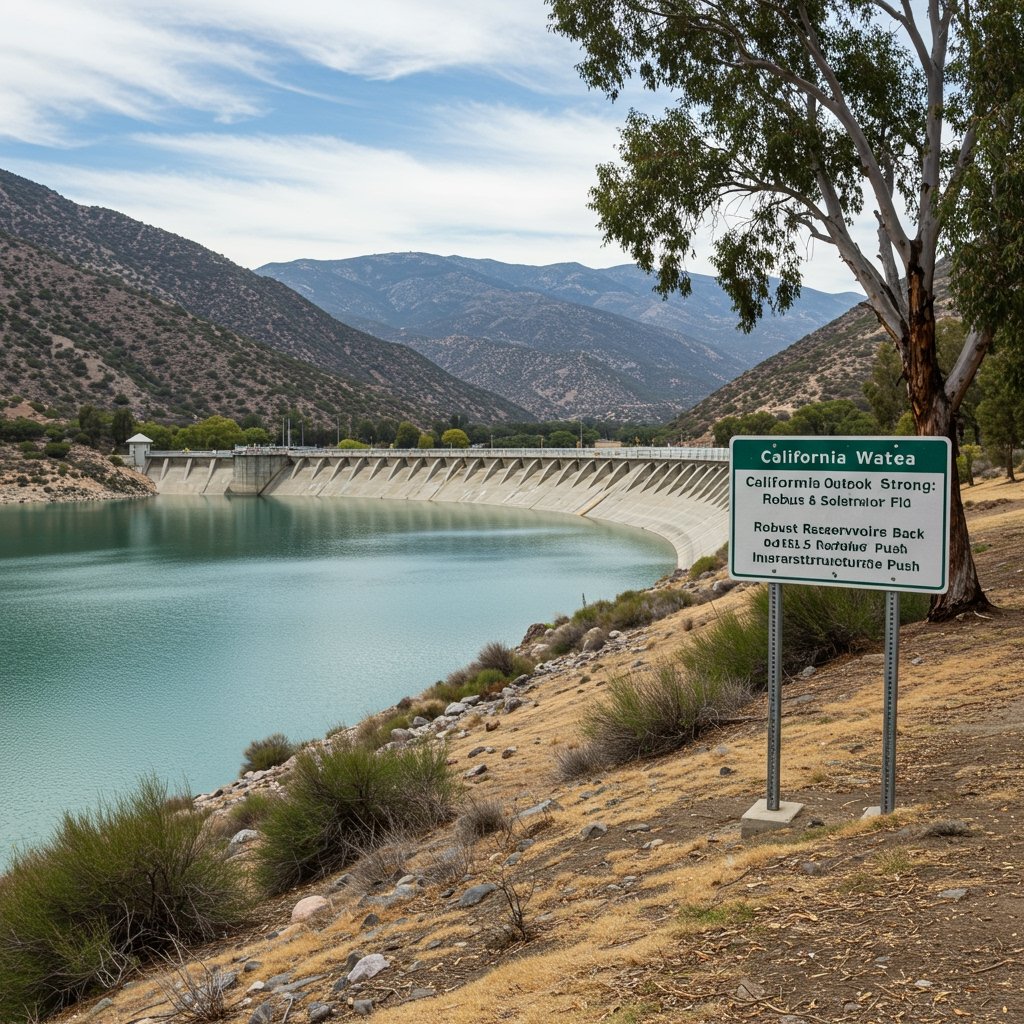California’s Water Picture: Abundance and Investment
California’s water landscape is currently reflecting the benefits of a generous winter precipitation season, with official reports indicating a significant recovery in statewide reservoir storage levels. According to the California Department of Water Resources (DWR), as of late March, storage across the state’s key reservoirs stood at a robust 105% of the historical average for this time of year. This statistic marks a substantial improvement compared to the conditions experienced during recent periods of severe drought, offering a welcome buffer as the state heads into its drier months.
The DWR’s announcement underscores the variability inherent in California’s climate, where swings between extreme wet and dry conditions are common. The current abundance, while temporary in the long-term climate cycle, provides a critical opportunity to replenish storage systems that are vital for sustaining the state’s vast agricultural sector, supporting urban populations, and maintaining environmental flows.
A Bold Funding Commitment for Future Security
Capitalizing on the momentum of the favorable water year, Governor Gavin Newsom’s office has concurrently unveiled a significant financial proposal aimed at bolstering California’s long-term water infrastructure. The administration is proposing a $3.5 billion package dedicated to enhancing water storage and conveyance systems across the state. This substantial investment is planned to be allocated over the next three years and is anticipated to be sourced from a combination of state bond funds and federal contributions, highlighting a multi-level governmental commitment to addressing California’s persistent water challenges.
The proposed funding package signals a strategic pivot towards proactive investment in foundational water systems. Rather than solely reacting to drought emergencies, the state is seeking to use periods of relative abundance to build resilience and capacity for future dry cycles, which are projected to become more frequent and intense under climate change.
Strategic Infrastructure Investments
The $3.5 billion allocation is specifically earmarked for critical water infrastructure projects deemed essential for California’s future water security. Among the key initiatives targeted for funding is the planned Sites Reservoir project located in Colusa County. This proposed off-stream storage facility is designed to capture water during high-flow periods in the Sacramento River system, storing it for release when water is needed most, thereby increasing the state’s overall storage capacity without requiring a dam on a major river.
In addition to new storage like Sites, a significant portion of the proposed funding is designated for improvements to the State Water Project (SWP) system. The SWP is a complex network of reservoirs, aqueducts, power plants, and pumping plants that delivers water to over 27 million Californians and irrigate hundreds of thousands of acres of farmland. Investments in the SWP are crucial for enhancing its operational efficiency, reliability, and capacity to move water across the state, adapting the system to changing hydrological conditions and increasing demands.
These infrastructure projects represent major undertakings with long lead times and significant environmental and engineering considerations. The proposed funding aims to accelerate planning, permitting, and construction phases, transforming conceptual or partially developed projects into operational components of the state’s water management portfolio.
Enhancing Drought Resilience and Future Supply
The overarching objective of this $3.5 billion investment package, as articulated by state officials, is to enhance drought resilience and secure future water supplies for both agricultural and urban use. By expanding storage capacity and improving conveyance systems, California aims to create a more robust and adaptable water management system capable of withstanding prolonged dry periods.
Increased storage provides a hedge against future droughts, ensuring that water captured during wet years is available during subsequent dry ones. Improvements to the SWP are intended to make the delivery system more flexible and reliable, capable of moving water efficiently to where it is needed across the state, even under variable conditions. This dual focus on storage and conveyance is seen as critical for meeting the diverse water needs of California’s economy and environment.
The investment acknowledges that while current reservoir levels are favorable, long-term climate trends necessitate significant upgrades to existing infrastructure and the development of new facilities to ensure water reliability for future generations. The state is leveraging the current positive conditions to make strategic, forward-looking investments.
The Importance of Continued Conservation
While the report from the California Department of Water Resources highlights a strong recovery compared to recent dry periods and provides a positive near-term outlook, state officials were quick to underscore the need for continued conservation efforts. Even with reservoirs at encouraging levels and significant infrastructure investments on the horizon, California remains a state with inherent water scarcity challenges.
The message is clear: conservation is not merely a measure for drought emergencies but a fundamental and ongoing component of sustainable water management in California’s arid and semi-arid climate. Efficient water use in homes, businesses, and agriculture remains essential for maximizing the benefit of available supplies and reducing the demand on storage systems.
The combination of robust current storage, strategic infrastructure investment, and persistent conservation efforts forms the state’s multi-pronged approach to navigating the complexities of its water future, aiming to build resilience and ensure reliability amidst the uncertainties of a changing climate.



















